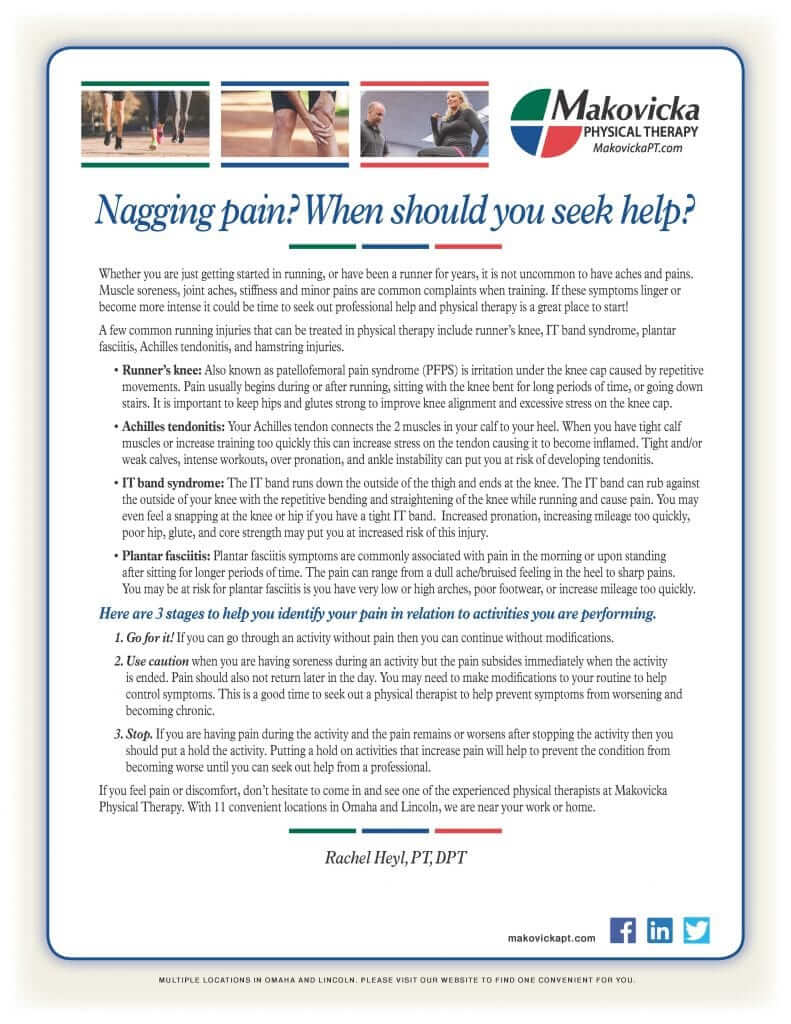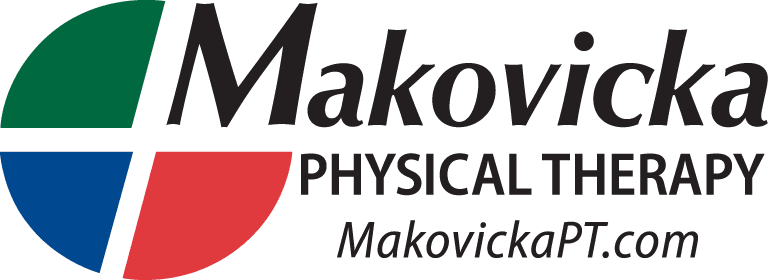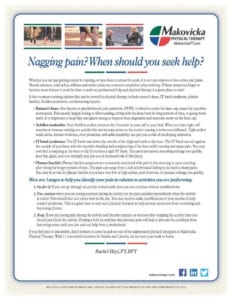Whether you are just getting started in running, or have been a runner for years, it is not uncommon to have aches and pains. Muscle soreness, joint aches, stiffness and minor pains are common complaints when training. If these symptoms linger or become more intense it could be time to seek out professional help and physical therapy is a great place to start!
A few common running injuries that can be treated in physical therapy include runner’s knee, IT band syndrome, plantar fasciitis, Achilles tendonitis, and hamstring injuries.
- Runner’s knee: Also known as patellofemoral pain syndrome (PFPS) is irritation under the knee cap caused by repetitive movements. Pain usually begins during or after running, sitting with the knee bent for long periods of time, or going down stairs. It is important to keep hips and
 strong to improve knee alignment and excessive stress on the knee cap.
strong to improve knee alignment and excessive stress on the knee cap. - Achilles tendonitis: Your Achilles tendon connects the 2 muscles in your calf to your heel. When you have tight calf muscles or increase training too quickly this can increase stress on the tendon causing it to become inflamed. Tight and/or weak calves, intense workouts, over pronation, and ankle instability can put you at risk of developing tendonitis.
- IT band syndrome: The IT band runs down the outside of the thigh and ends at the knee. The IT band can rub against the outside of your knee with the repetitive bending and straightening of the knee while running and cause pain. You may even feel a snapping at the knee or hip if you have a tight IT band. Increased pronation, increasing mileage too quickly, poor hip, glute, and core strength may put you at increased risk of this injury.
- Plantar fasciitis: Plantar fasciitis symptoms are commonly associated with pain in the morning or upon standing after sitting for longer periods of time. The pain can range from a dull ache/bruised feeling in the heel to sharp pains. You may be at risk for plantar fasciitis is you have very low or high arches, poor footwear, or increase mileage too quickly.
Here are 3 stages to help you identify your pain in relation to activities you are performing.
- Go for it! If you can go through an activity without pain then you can continue without modifications.
- Use caution when you are having soreness during an activity but the pain subsides immediately when the activity is ended. Pain should also not return later in the day. You may need to make modifications to your routine to help control symptoms. This is a good time to seek out a physical therapist to help prevent symptoms from worsening and becoming chronic.
- Stop. If you are having pain during the activity and the pain remains or worsens after stopping the activity then you should put a hold the activity. Putting a hold on activities that increase pain will help to prevent the condition from becoming worse until you can seek out help from a professional.
If you feel pain or discomfort, don’t hesitate to come in and see one of the experienced physical therapists at Makovicka Physical Therapy. With 11 convenient locations in Omaha and Lincoln, we are near your work or home.
Rachel Heyl, PT, DPT

